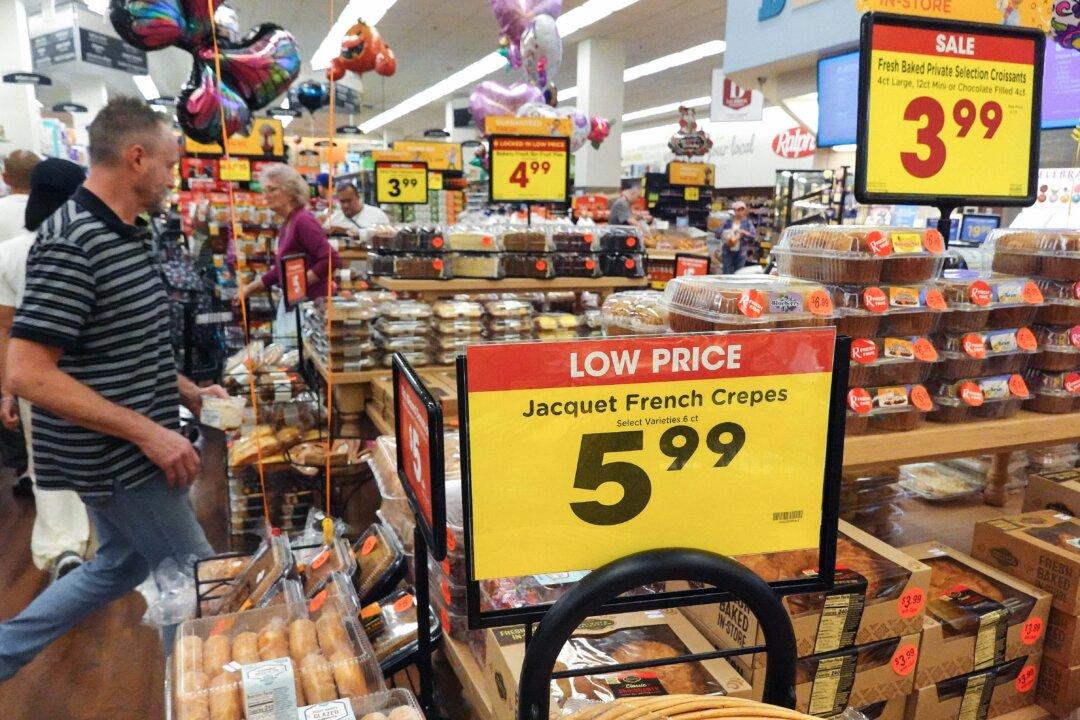Amid fears of negative economic effects of high interest rates and the wars in Gaza and Ukraine, U.S. consumer confidence fell for the fourth straight month in November while long-run inflation expectations rocketed to the highest level in 12 years.
The University of Michigan’s closely watched consumer sentiment gauge fell by more than 5 percentage points in November, to a reading of 60.4 percent.
The slump extends a months-long decline in U.S. consumer confidence as various economic indicators have deteriorated and recession fears have continued to swirl.
Even though current and expected personal finances showed modest improvement in November, the long-run economic outlook plunged by 12 percent, according to the University of Michigan sentiment survey.
The sharp decline in future economic expectations was partly due to growing concerns about the negative effects of high interest rates, according to Joanne Hsu, University of Michigan Surveys of Consumers director.
The Federal Reserve has raised interest rates sharply from near zero in March 2022 to within a current range of 5.25–5.50 percent in a feverish bid to quash soaring inflation.
Inflation Expectations Jump
Inflation fell from its peak of 9.1 percent year-over-year in June 2022 to 3 percent in June 2023, sparking hope that it would continue falling. But this decline stalled in August and September, with the rate rebounding to 3.7 percent, partly on the back of higher energy costs.The rebound of inflationary pressures has translated into expectations that inflation will continue to pick up steam going forward.
Consumers now expect the year-ahead pace of inflation to be 4.4 percent, up from the 4.2 percent they predicted in October, which itself was a large jump from September’s reading of 3.2 percent, per the University of Michigan survey.
The longer-run inflation expectations were the biggest upside surprise in the survey, however. These rose from 3.0 percent in October to 3.2 percent this month—the highest reading since 2011.
Gas price expectations—over both the short and long run—rose to their highest readings so far this year, contributing to the slump in consumer sentiment.
“Ongoing wars in Gaza and Ukraine weighed on many consumers as well,” Ms. Hsu said.
The outbreak of conflict in the Middle East—triggered by a shock incursion of Hamas terrorists into Israel and their slaughter of hundreds of civilians—is the latest geopolitical issue to cause economists to worry about negative economic effects.
Bestselling author and Bear Traps Report founder Larry McDonald recently warned that the Israel–Hamas war could be “extremely inflationary.” He also lamented that the decarbonization movement has led to dwindling oil patch investment and said that $250-per-barrel crude was an acute possibility.
‘Slower Inflation Is an Oxymoron’
Even though the latest (September) data showed that the pace of inflation was 3.7 percent in annualized terms—a significant drop from the recent peak of 9.1 percent—this has been of little solace to consumers. Many lament that these numbers don’t show prices falling, just rising a bit more slowly.“Slower inflation is an oxymoron to consumers that take no solace in the fact that prices aren’t rising as fast, because they are still rising,” Greg McBride, chief financial analyst at Bankrate, told The Epoch Times in an emailed statement.
“The cumulative effect of inflation has strained household budgets and undermined buying power, with the Consumer Price Index up more than 18 percent in the past three years,” he added.
Next week, the government will release the inflation data for October, with Mr. McBride saying that any uptick in the pace of inflation is likely to rattle both stock and bond markets and undermine the notion that the Fed is done raising interest rates.
“If inflation is seen as trending lower, this helps keep the Fed on the sidelines. But even then, rates will remain high for some time to come—to the delight of savers and the disappointment of borrowers,” he wrote.
That doubt is in part due to significant weakness in loan demand caused by high interest rates, combined with an increased reluctance for banks to lend.
“This combination of sharply higher borrowing costs and reduced credit availability tends to be toxic for growth,” ING analysts said, adding that they expect a recession in 2024 lasting at least two quarters.
“In this environment, we see the slowdown in inflation regaining momentum in early 2024.”







